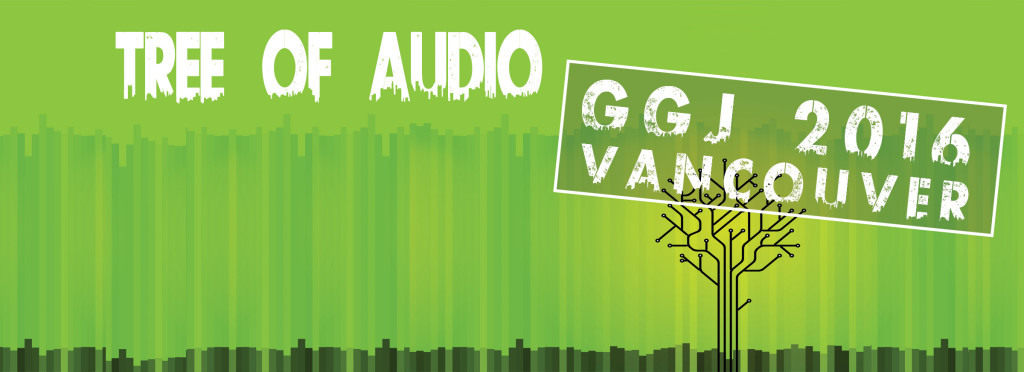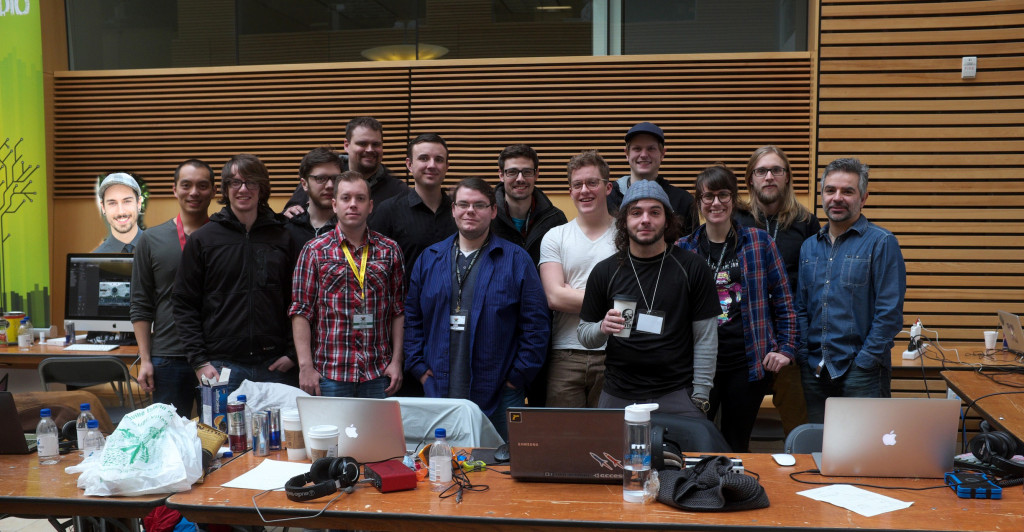Tree of Audio – Global Game Jam 2016


Tree of Audio started at the Full Indie Game Jam in 2013 with 100 jammers and 5 sound designers creating Audio and Music for 11 games. To streamline the pipeline between us and devs, we experimented with a centralized model of audio content generation. More recently, in the Vancouver Global Game Jam 2015 we tested the concept on a larger scale with 330 jammers. We had 22 Sound Designers/Composers join the team who collectively worked on 38 games, generating over 1,016 audio assets including original Voice Over content, 76 custom music pieces, 811 SFX, FMOD integration and heaps of audio goodness totalling 1.56GB of data.
Please pre-register. We have a limited number of spots this year.
Only 15 2 spots left this year
Details:
The model centralizes participating audio folks so that jammers looking for audio help of any kind can come to the “Tree of Audio” named for the tree that the audio station was next to at the Full Indie Jam in 2013. Within the “Tree”, the audio specialists can work together on the projects, manage delegation, and help mentor new audio people/students.
Benefits:
– You’ll get visibility on all projects, not just the ones you chose to work on. This will give you a far greater oversight on how audio is created and implemented for a variety of teams
– You can work on as much or as little sound design as you’re comfortable with within the jam timelines
– Get to meet all the development teams and make far more friends
– You don’t need to approach game teams individually and “sell your skills” in order to participate so it’s okay if you are not a “social butterfly”
– Jammers have an easy-to-spot location to go to for audio
– All the audio folks have an easy-to-spot location to go to to increase visibility and gain access to more projects
– More senior audio folks can help mentor junior audio folks, and will have hands on demos and resources to get you started
– It creates a cool element to the jam that could grow to become a really great tradition (with your own web site, even!)
– Instead of working on one or two games, you get visibility and hands on experience for all games!
FAQ:
Q – But I already have a team I’m planning on working with!
A- That’s totally fine and you’re welcome to work with your team only, if that’s what you are comfortable with. We don’t want to restrict how people choose to jam with their friends, after all, working on a Jam is also about making friends and jamming with them!
We would suggest you consider joining the Tree of Audio and interacting/sharing your ideas with the rest of the sound designers, so we can all benefit from the process. Who knows, through the Tree of Audio, you might find other games that you want to be a part of, too?
Q – Will I be able to form personal relationships with Game Teams? I don’t want to be a member of a faceless audio team that just cranks out audio assets.
A – Building personal relationships with game teams is really important to the Tree of Audio experience. As Tree-ers, we will all meet and chat with a representative from each Game Team to discuss their game, vision and audio needs. During the jam we often visit the game team for updates (individually and as a group) and report back info to the Tree of Audio hangout area. This info is entered in our shared docs so that we can all access the updates and have visibility into the process. At the end of the jam, we send out a summary to each game team that includes their sound assets list (assets shared on cloud) and every sound designer’s contact info.
Q – Working on all of the games simultaneously seems like a massive task. Like… Zoink!
A – Yes that’s true, but when we all work together and pool our strengths, we can complete more tasks as a team. Imagine this as a scenario: you are strong at music creation, but you’re really interested in SFX creation too. You can tackle music tasks head on, work on some SFX as a side mission and collaborate with several other audio folks on SFX. At the end, several SFX are created for a given game (perhaps several people wanted to create that spooky basement ambience?). Now we can submit all these sounds to the game team, and chat amongst the sound people about the process, source audio, implementation, mixing, etc). The game team has several options to choose from, and you’ve learned a few new tricks, without the pressure of being the only person trying to come up with content. Less pressure – more learning!
Read past testimonials:
Connect with us:





